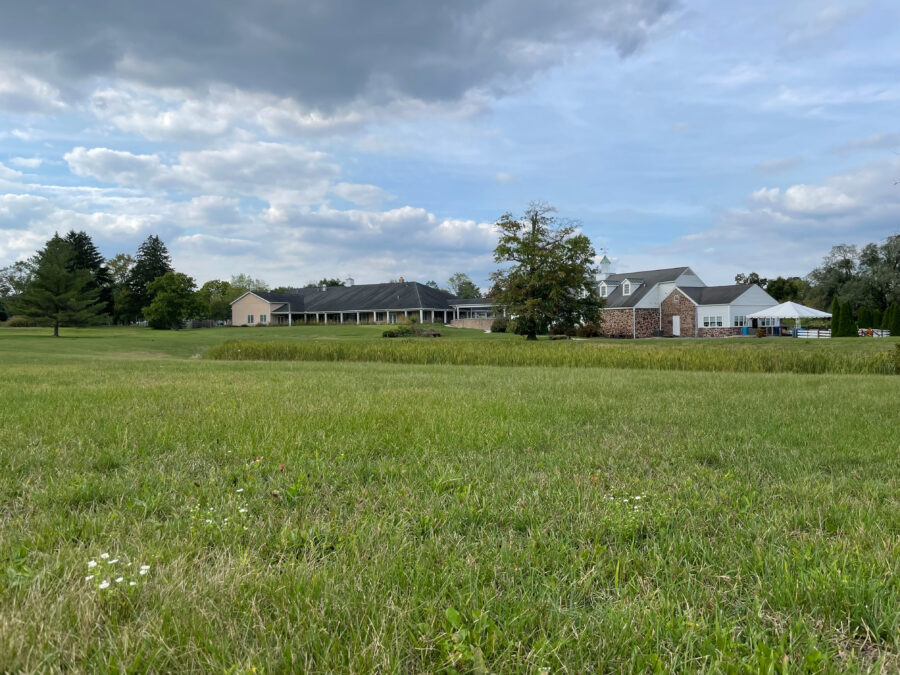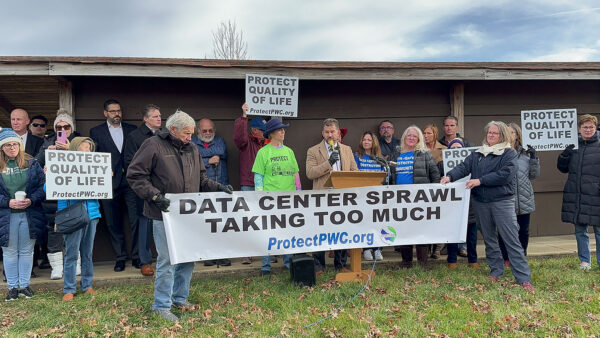 Lawrence Swiader/American Battlefield Trust
Lawrence Swiader/American Battlefield TrustThe former clubhouse at the Gettysburg Country Club, whose buildings–per a recent agreement with the American Battlefield Trust–Cumberland Township will use as temporary headquarters and for local police and administrators.
THE LONG PRESERVATION journey turning the former Gettysburg Country Club from a recreational facility back to its 1863 wartime landscape entered an unexpected phase this summer. The American Battlefield Trust launched a campaign to pay a second installment of its purchase cost and announced an agreement with Cumberland Township to use the former clubhouse and offices as temporary headquarters for local police and administrators.
The Trust strives to be a good community neighbor, paying property taxes when we could claim exempt status and making additional voluntary payments in recognition of a once-commercial property reverting to agricultural usage. Here we are offering use of the clubhouse buildings rent free through March 31, 2026; the township will pay utilities and part of mowing, maintenance, and snow removal costs.
The Gettysburg Day Spa will continue operating in the historic building familiar to one of its most famous members, President Dwight Eisenhower (who had a home near the battlefield), and it will be retained in any future landscape restoration.
The Trust acquired the 15-acre property last November. The larger golf course has been part of Gettysburg National Military Park for more than a decade, but developers had eyed the portion fronting Chambersburg Pike until local advocacy opened the door to a preservation solution. We were able to negotiate a $3 million purchase price, and structure the transaction into fundraising phases.
The property’s road to preservation began in 2008 when Gettysburg Country Club declared bankruptcy. The site was identified as an acquisition priority for the park and preservationists because of its historic significance: Here Union cavalry slowed the initial Confederate advance, and the famed Union Iron Brigade and Confederate general James Archer’s brigade of Tennessee and Alabama troops fought. The first bloodletting at Gettysburg occurred along the banks of Willoughby’s Run, on and around what became country club land. Afield hospital was established on those banks and at least 23 combatants were buried on that land.
A sale failed to find a buyer for the bankrupt golf course and the site was acquired by a developer. But preservationists continued to negotiate and in March 2011 The Conservation Fund, assisted by the Trust and other organizations, transferred 95 acres to the National Park Service. But 15 acres fronting the road, including clubhouses, tennis courts, and a swimming pool, had been subdivided out. After a decade of various uses and proposals, this vestige of the Emmanuel Harman Farm was proposed for development in 2022. When the landowner was denied permits for an apartment complex, it gave preservation groups the opportunity to purchase the property.
This summer, we are hoping to raise $375,000 from private donors that will be matched with an anonymous private gift to make the next installment payment. Consider going to battlefields.org and making a contribution.
David Duncan is president of the nonprofit, nonpartisan American Battlefield Trust, an organization dedicated to preserving America’s hallowed battlegrounds—Revolutionary War, War of 1812, and Civil War—and educating the public about their significance.




